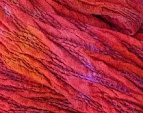The flightless takahē (Porphyrio [Notornis] hochstetteri) is a unique bird, a conservation icon and a survivor. The takahē has clung to existence despite the pressures of hunting, habitat destruction and introduced predators.
DOC's Takahē Recovery Programme in partnership with Mitre10 Takahē Rescue is committed to ensuring the survival, growth and security of takahē populations throughout New Zealand.
From an era when large flightless birds were spread throughout New Zealand, the takahē has clung to existence despite the pressures of hunting, habitat destruction and introduced predators. 
The takahē was once thought to be extinct, but in the 1948 it hit world headlines when an Invercargill doctor, Geoffrey Orbell, rediscovered the bird high in the tussock grasslands of the remote Murchison Mountains, Fiordland.
Even today, despite years of conservation effort, the takahē remains critically endangered.
Are they just fat pūkeko?
No! A takahē looks similar to the common pūkeko, probably because they share an ancestor, so they are very distantly related.
However, where the pūkeko is skinny and blue with a black back, the takahē is much larger and more colourful. It has a large, strong red beak and stout red legs. Its gorgeous feathers range from an iridescent dark blue head, neck and breast to peacock blue shoulders and turquoise and olive green wings and back.
Adult takahē are about the size of a large hen, 50 cm high and can weigh over 3 kg.
Takahē are flightless. They have wings, but they only use them to display during courtship or as a show of aggression.
Takahē have lived over 20 years in captivity but in the wild few birds reach this age.
(Information from http://www.doc.govt.nz/nature/native-animals/birds/birds-a-z/takahe/)
And that is the last in this Plumage series celebrating Pauanesia's 20th birthday.
I hope you've enjoyed learning a little about some of New Zealand's colourful native birds
and seen where I get the inspiration for a lot of my weavings.


No comments:
Post a Comment